Some areas in Barcelona make you wonder whether you’re in a city or some sort of magical fantasy land.
Some of the attractions in the city were designed in such a way that it’s hard to distinguish between the two.
There aren’t many urban areas in the world that convey this particular feeling better than this public park.
Let’s take a closer look at some of the most interesting Park Güell facts, a must-see tourist attraction in the capital of Catalonia!
1. It’s located to the northwest of the historical center of the city
Park Güell is arguably one of the most magnificent public parks in the world. It’s a magical place located just to the northwest of the historical center of Barcelona on an elevated area called “Carmel Hill.”
This hill is located within the “La Salut” neighborhood in the Gràcia district of Barcelona.
It’s bordered to the south by the Eixample district which features multiple famous landmarks in the city, including but not limited to the Casa Milà (also known as La Pedrera), the Casa Batlló, and one of the iconic churches of La Sagrada Família.

2. The area once appeared as a desolate landscape
Before the park was constructed in the early 20th century, the hill on which it was built was referred to as the “Muntanya Pelada,” which translates to the “Bare Mountain.” It was named this way for the simple reason that there was no vegetation here.
The area was also pretty much uninhabited at this point, even though “La Salut” was considered to be an upscale neighborhood with numerous mansions.

It was called “The Health” because it was just outside of the city, away from the polluting smoke of the factories during the Industrial Revolution.
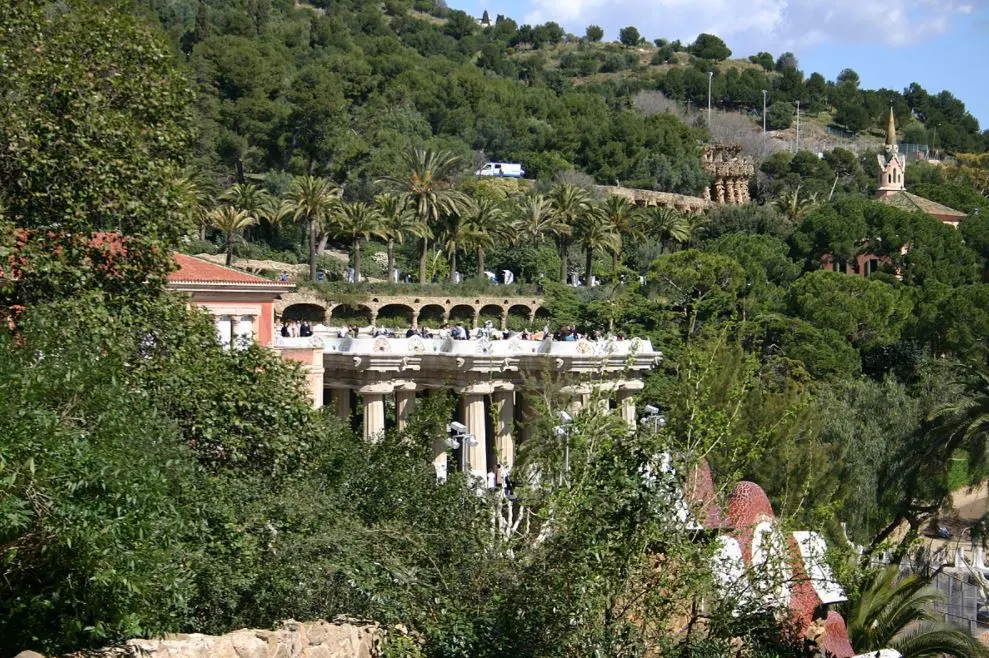
3. The park was commissioned by a rich Catalan industrialist
The park was commissioned by one of the richest people in Barcelona in the late 19th century, Eusebi Güell i Bacigalupi, 1st Count of Güell, better known as simply Eusebi Güell.
Güell was born into a rich family himself and his finances didn’t get worse after marrying Luisa Isabel Lopez y Bru, the daughter of Antonio López y López, first Marquis of Comillas, in 1871. Her family was equally rich as that of Güell.
Apart from the park, he also commissioned the Palau Güell, an incredible mansion in the center of Barcelona.

4. It was designed by the most famous Catalan architect in history
Even though the original idea of the park was the of Güell, it’s really the brainchild of the most famous Catalan architect in history, Antoni Gaudí. He was the architect of all the landmarks we already mentioned, including the most famous church in the city.
He was also a friend of Güell who became his patron, something that is emphasized by this remarkable anecdote. At one point, Gaudí mentioned to Güell that “Sometimes I think we are the only people who like this architecture.” Güell replied by saying “I don’t like your architecture, I respect it.”
Regardless, very few people left their permanent mark on a city other than Gaudí in Barcelona. His work is the epitome of the Catalan Modernism movement, something exemplified by the multicolored mosaic salamander that welcomes you at Park Güell.
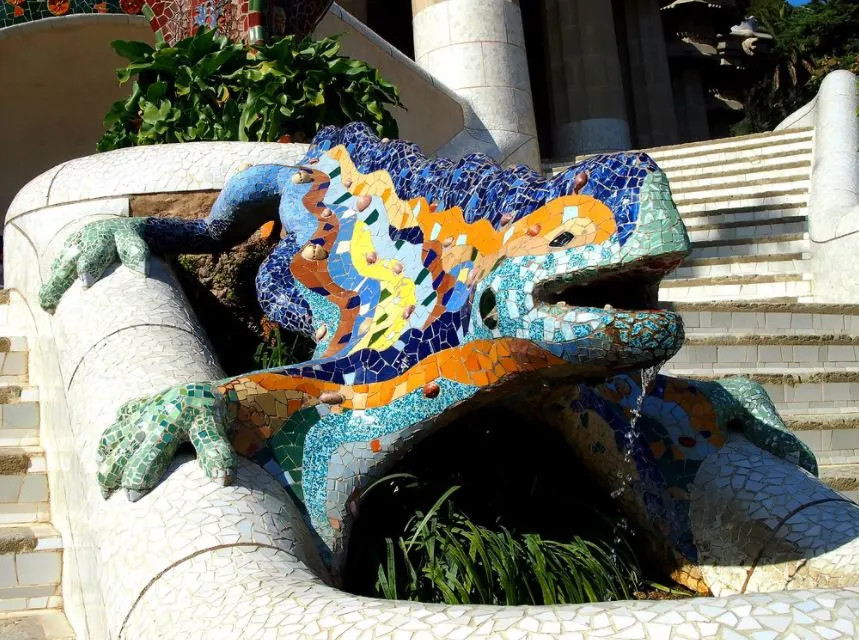
5. It was originally conceived as a luxury housing project
One of the most remarkable Park Güell facts is that it wasn’t intended to become a park at all, at least not like the public park it is today. Güell’s idea was to create an addition to the upscale “La Salut” neighborhood of Barcelona, which means the park was intended to be a residential project.
He got the idea from the English “garden city movement,” an urban planning method in which communities are located within green zones such as parks.
The residential project wasn’t a success because it was too far away from the city at the time which made it impossible to sell the units to the public. After all, there weren’t that many cars driving around, something emphasized by the design of roads in the park meant to be used by carriages.
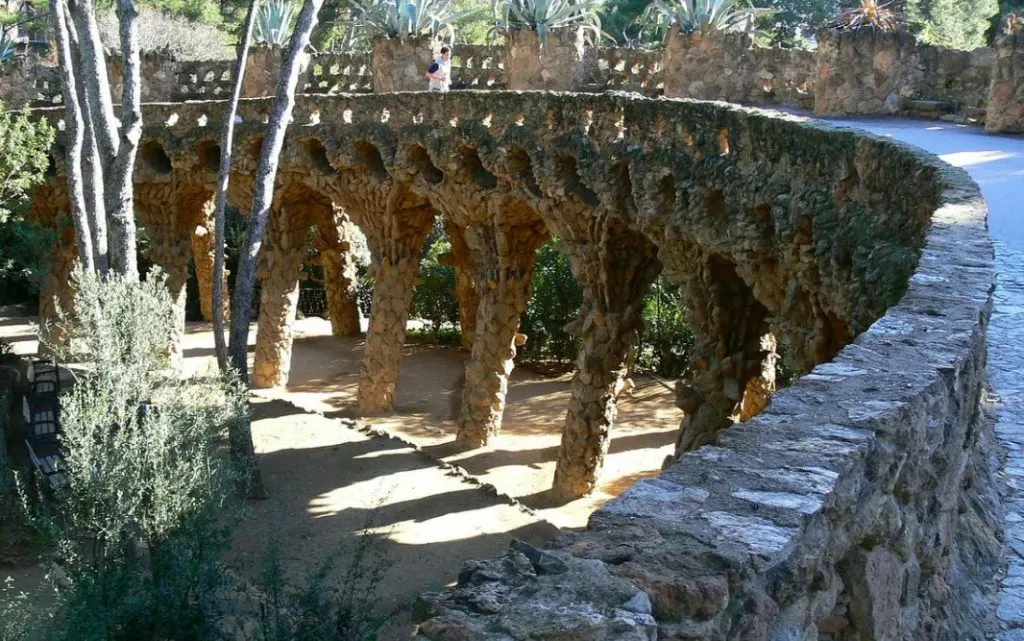
6. Only two houses were built and one became Gaudí’s home
About 60 luxury houses were supposed to be constructed within the park, but ultimately, only 2 of these were built. One of them became a show house which was meant to attract buyers, the other didn’t end up being sold to the public.
One of the most amazing Park Güell facts is that even though Gaudí designed neither of these houses, he still bought one on the recommendation of his friend Eusebi.
This house, which was designed by another Catalan Modernist architect named Francesc Berenguer in 1904, became Gaudí’s home between 1906 and 1926, the year he passed away.
It has been the Gaudi House Museum since 1963 and houses a collection of furniture designed by Gaudí during his stay there.
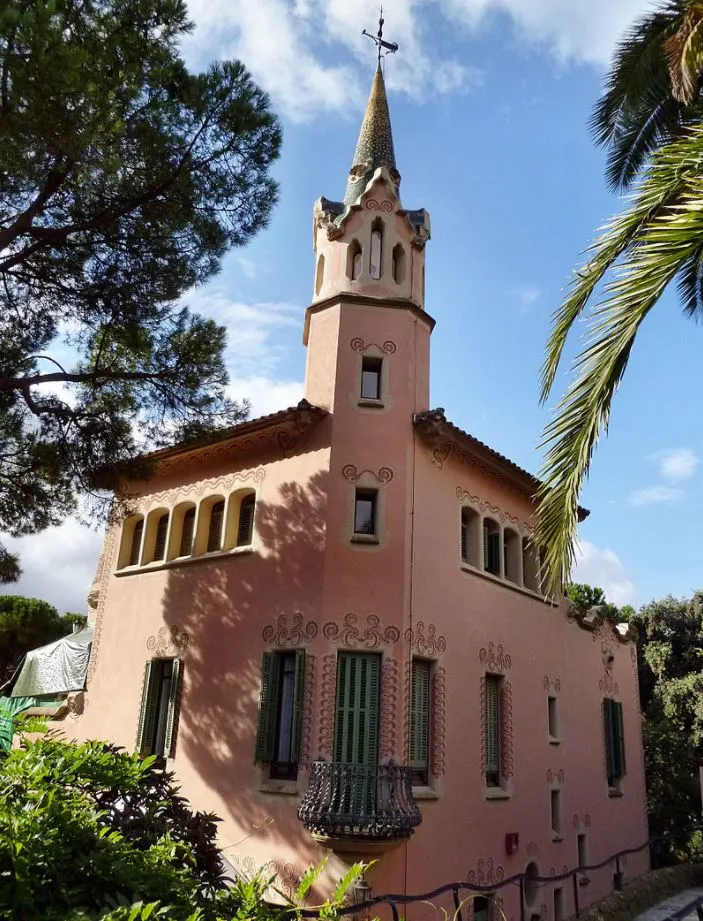
7. It took 14 years to build the park in the early 20th century
The park was constructed at the height of the Catalan Modernist movement. The early 20th century was a time when Gaudí started incorporating naturalist elements into his designs which were inspired by organic shapes.
This translates into various elements of the structures, such as the viaduct and pathways, blending in with the natural features of the park.
It eventually took 14 years to complete the entire complex was built between 1900 and 1914. It was only in the year 1926 that its original purpose was changed and it became a public park after it was donated to the city of Barcelona.
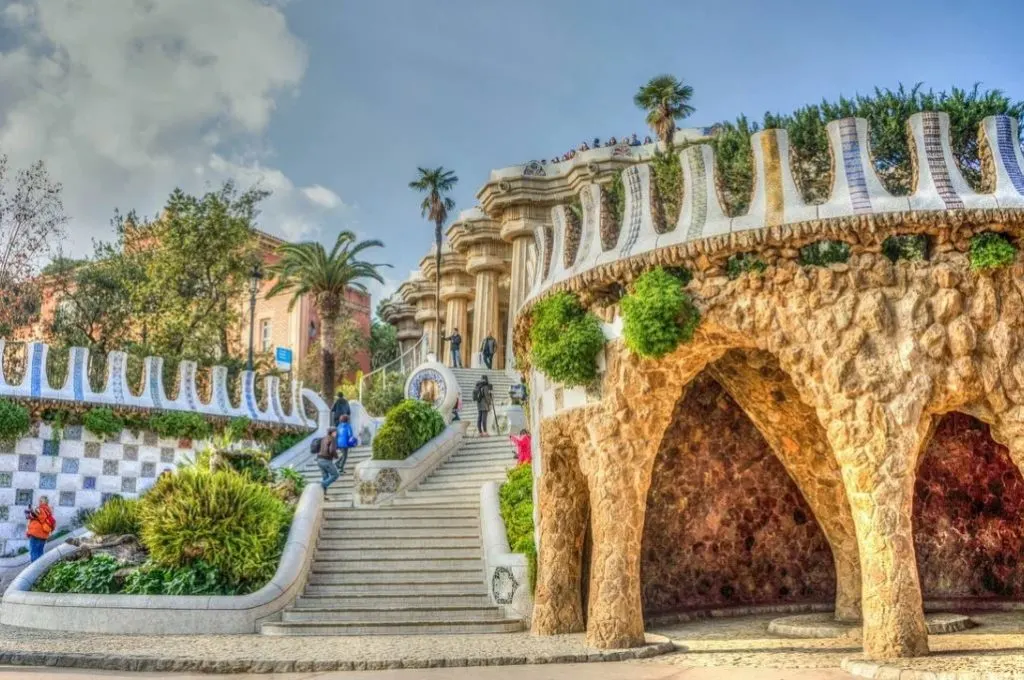
8. One of the buildings at the entrance is part of the MUHBA
The entrance of the park features two fascinating buildings that somehow seem to blend into the landscape, even though they feature distinctive design elements on their roofs.
The larger of these two buildings serves as a permanent exhibition of the MUHBA, the Barcelona City History Museum, with items on display related to the building itself, the park, and the city of Barcelona.

9. The Hypostyle Room was intended to be used for the weekly market
One of the most monumental features of the park is the so-called “Hypostyle Room,” a large space supported by a total of 86 Doric Columns.
This area was designed by Gaudí in such a way that it could serve as the space of the weekly market for residents who were supposed to live in the community. The top of this space serves as a viewing platform that provides amazing views of the city.

10. The highest point of the park is referred to as “Calvary Hill”
While the roof of the Hypostyle Room is an excellent spot to get stunning views of the city of Barcelona, there’s no better place than the highest point in the park, an area called “El Turó de les Tres Creus.”
This point features 3 crosses, a religious element, and the main reason why this part of the park is referred to as “Calvary Hill.” This spot allows you to get a clear view of all the famous landmarks in the city as well!

